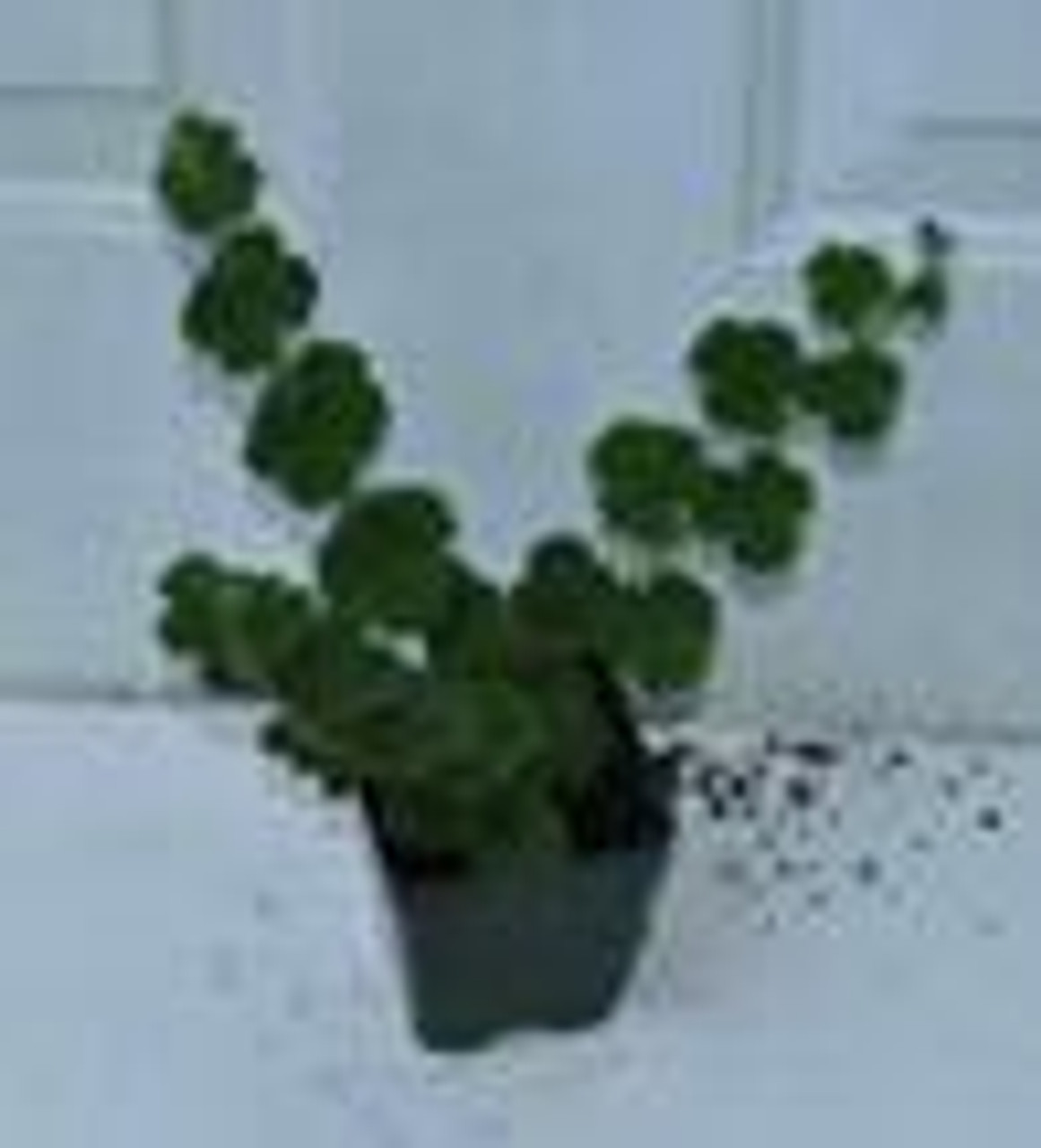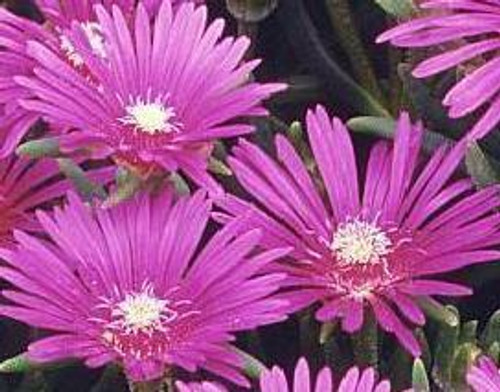Product Description
Rubus hayata-koidzumii is better known (incorrectly) as Rubus calcinoides.(3.5-inch pot)
Common names: Creeping Raspberry, Crinkle-leaf Creeper, Taiwanese Creeping Rubus, Creeping Bramble, and Emerald Carpet.
- Height: 2 Inches
- Spread: 18-24 Inches
- Hardiness Zone: 6-10
- Sun to Part Shade
- Foliage provides textural interest
Rubus hayata-koidzumii, commonly known as Rubus calcinoides, creeping raspberry, crinkle-leaf creeper, or Taiwanese creeping bramble, is a low-growing, evergreen perennial plant that is native to Taiwan. It is a member of the rose family (Rosaceae).
Creeping raspberry grows to a height of 6-12 inches and spreads to a width of 24-36 inches. Rubus provides textural interest in the landscape with its dark green, puckered or crinkled, 1½" leaves. Leaves may turn burgundy red in the Winter. Small white flowers appear in spring followed by small, yellow-orange berries. Fruit is edible and tasty, but tiny, so leave them for the birds. Rubus is evergreen in the Southern zones but can be semi-evergreen in Zones 6-7.
Durable, fast-growing evergreen groundcover that takes sun or shade. Creeping raspberry prefers moist, well-drained soil and partial shade. Rubus makes a good ground cover in hot, dry areas with ample water and well-drained soil.
The thick, coarse-textured, dark green foliage adorns stem runners that root as they creep along the ground and spreads in all directions. Creeping raspberry is aggressive, but not invasive. It doesn't climb trees or smother shrubs. Easily control it with mechanical edging. A light trimming in late winter will encourage new growth in spring.
Rubus hayata-koidzumii, also known as the creeping raspberry or crinkle-leaf creeper, is a versatile and vigorous groundcover that offers unique texture and seasonal interest. Here is a breakdown of its key features:
Appearance and Characteristics:
- Creeping Habit: As its name suggests, this raspberry relative has a creeping growth habit, spreading by runners that root along the ground. This allows it to form a dense mat that effectively covers bare soil and suppresses weeds.
- Crinkled Foliage: The deep green leaves are distinctively crinkled or wrinkled, adding a captivating textural element to the landscape. The foliage remains evergreen in mild climates, providing year-round interest.
- Seasonal Color Changes: In autumn, the leaves often take on attractive bronze or reddish hues, adding a touch of warm color to the fall garden.
- Flowers and Fruit: In mid-summer, small, white flowers appear, often hidden amongst the foliage. These give way to edible, aggregate fruits (similar to raspberries) that range in color from yellow to orange-red. While not as flavorful as traditional raspberries, they are still 1 a delightful surprise.
Growing Conditions:
- Sunlight: Rubus hayata-koidzumii tolerates a wide range of light conditions, from full sun to partial shade. It can even thrive in deep shade, making it a valuable groundcover for challenging areas.
- Soil: It adapts to various soil types but prefers well-drained soil.
- Moisture: While drought-tolerant once established, it appreciates regular watering during hot, dry periods, especially in its first year.
- Hardiness: It is generally hardy in USDA zones 7-9.
Uses in Landscaping:
- Groundcover: Its primary use is as a groundcover, where it excels at covering large areas, suppressing weeds, and adding texture.
- Erosion Control: Its dense growth habit and spreading runners make it effective for stabilizing slopes and preventing erosion.
- Difficult Areas: It thrives in areas where other plants struggle, such as dry shade or under trees.
- Containers and Hanging Baskets: Its trailing habit makes it suitable for containers and hanging baskets, where it can spill over the edges and create a cascading effect.
Benefits:
- Adaptable: It tolerates a wide range of light and soil conditions.
- Vigorous: It spreads quickly to cover bare soil.
- Weed Suppression: Its dense growth helps to choke out weeds.
- Erosion Control: Effective for stabilizing slopes.
- Textural Interest: The crinkled foliage adds a unique textural element to the landscape.
- Seasonal Color: Provides evergreen foliage and attractive fall color.
- Edible Fruit: Produces small, edible fruits.
Potential Drawbacks:
- Can be Aggressive: Its vigorous growth may require occasional edging or maintenance to keep it in bounds.
- Thorny: Like other raspberries, it has thorns, which can be a consideration when planting near walkways or play areas.
Additional Tips:
- Planting: The best time to plant is in spring or fall.
- Spacing: Space plants about 18-24 inches apart to allow for spreading.
- Maintenance: May require occasional edging to control spreading.
Overall, Rubus hayata-koidzumii is a valuable groundcover that offers a unique combination of adaptability, vigor, and textural interest. It is an excellent choice for gardeners seeking a low-maintenance solution for challenging areas or those who simply appreciate their unusual foliage and seasonal color changes.
Other Details
The most important part of the plant is its root system. Healthy roots are the foundation of a healthy, vibrant plant. The type of plug container used is based on the specific needs of the plants. Perennials offered as bare root traditionally perform better when planted as bare root.Planted in a specialized mix, potted plants have well established root systems. Top growth stage will vary depending on the current life cycle and time of year when shipped. In Winter and early Spring dormant plants may be shipped. Dormant plants may be planted right away, even before the last frost date.
Most bare root varieties are field grown for at least one season, though Hemerocallis and Hosta are grown for two seasons. The bulk of the soil is removed during the harvesting process and the tops of most varieties are trimmed back to the crown. They are graded, packed in shredded aspen or sphagnum moss and stored in freezers until ready to be shipped.
See our Container Sizes and Bare Root Perennials pages for more information.
Plant information and care is provided in the Overview section, Plant Genus Page and general information is provided in the Planting Care & Guides. Additional questions can be asked on each Plant page.
Plant Spacing: Using the maximum mature spread or width of a plant to guide spacing, ensures space to grow to full size. To fill an area sooner, plant them closer together. Just remember, future thinning or transplanting may be needed.
Water: Keep a close eye on newly planted perennials, especially throughout the first growing year. Most early plant loss is due to too much or too little water!
Product Videos
Custom Field
Product Reviews
5 Reviews Hide Reviews Show Reviews
-
Hoping for the best
Items looked great when they arrived. Super fast shipping. I am anxious to see how fast they spread and what they look like in the fall and expect to order more.
-
Creeping Raspberry
Package arrived in great shape exactly as scheduled from Bloomingdesigns. Plants were in excellent condition and very healthy. Planted them right away now awaiting their growth.
-
Plants
Plants were delivered on time , healthy and in a sturdy container
-
Plants
Plants were delivered on time , healthy and in a sturdy container
-
So pleased!
My box of plants arrived in perfect condition! After giving them a few days to "acclimate", we got them in the ground and they seem happy! Great service! Thank you!!












